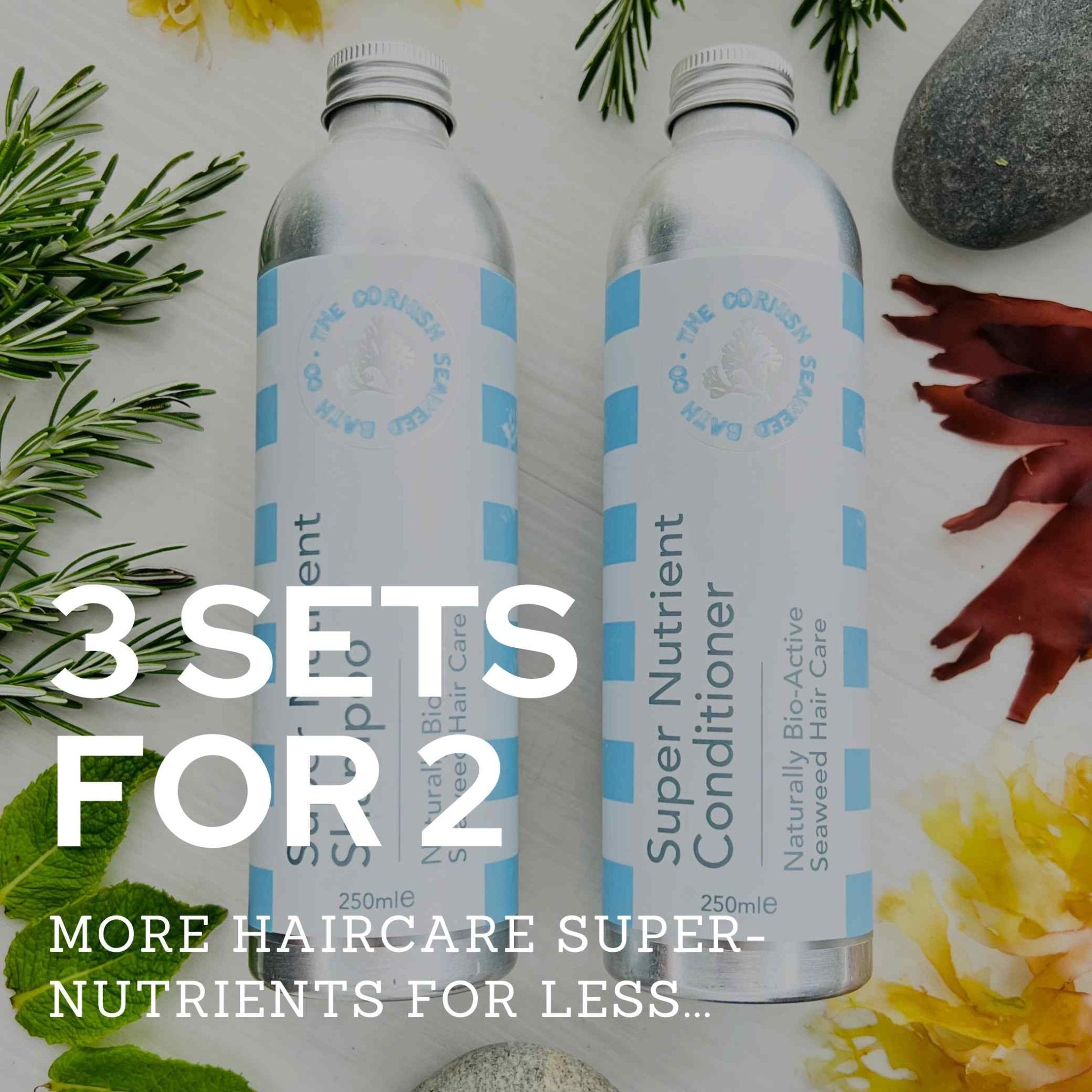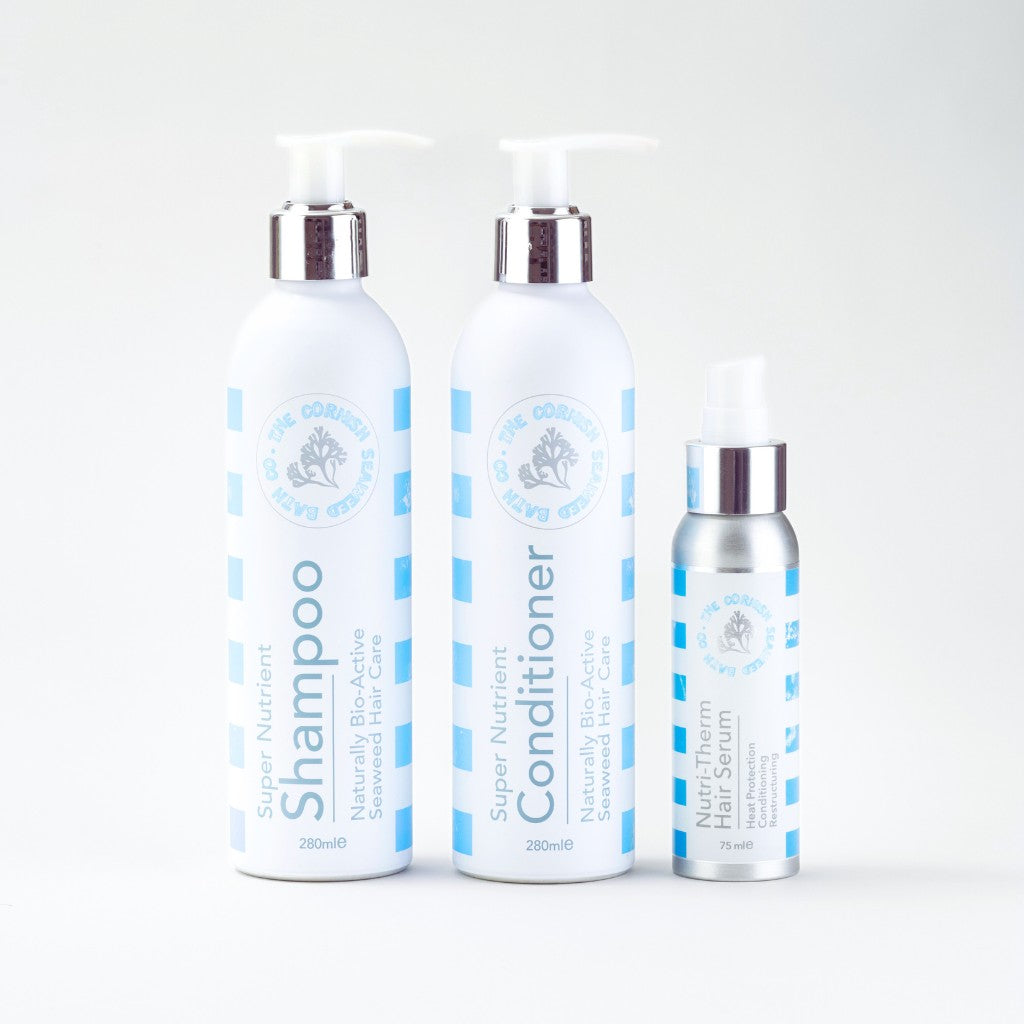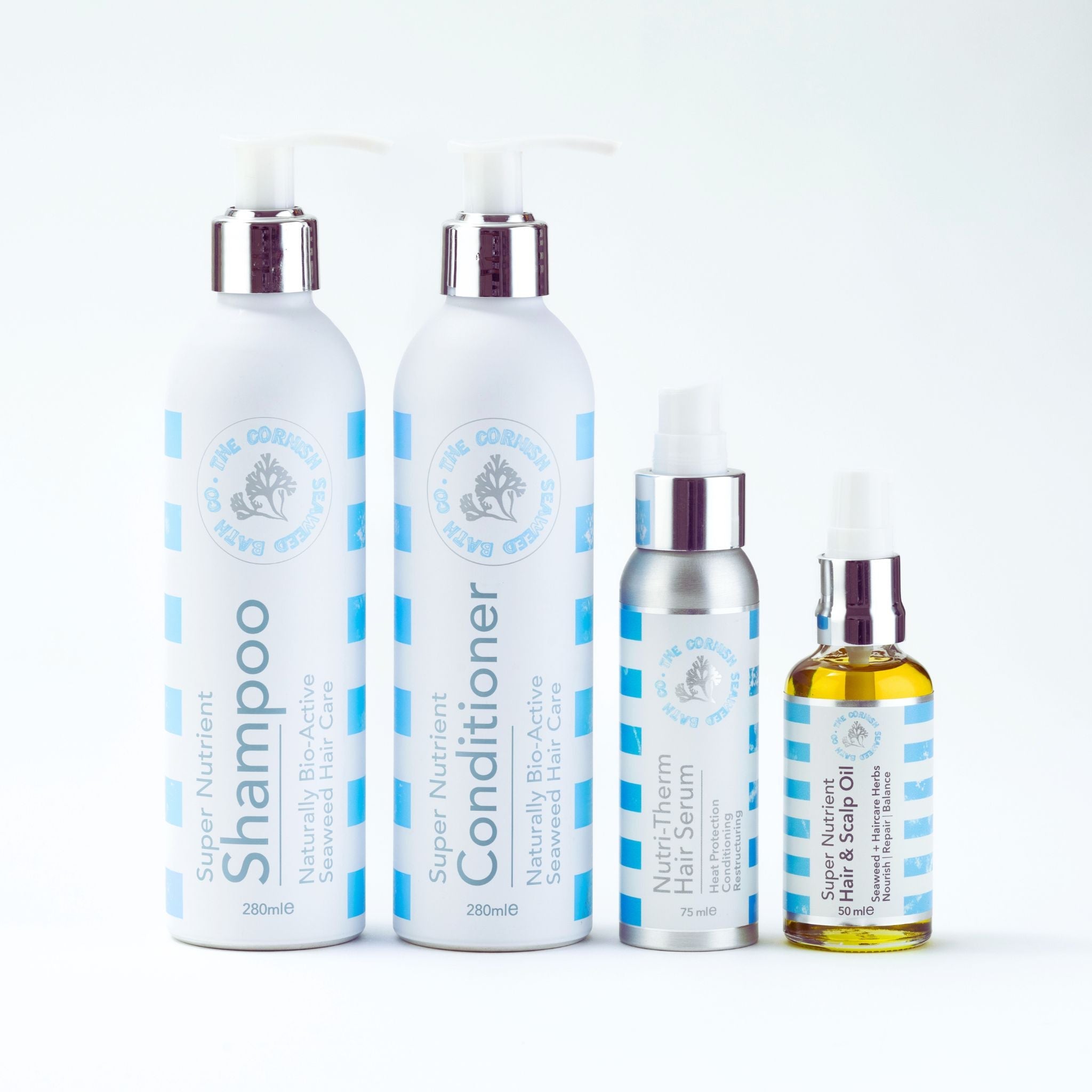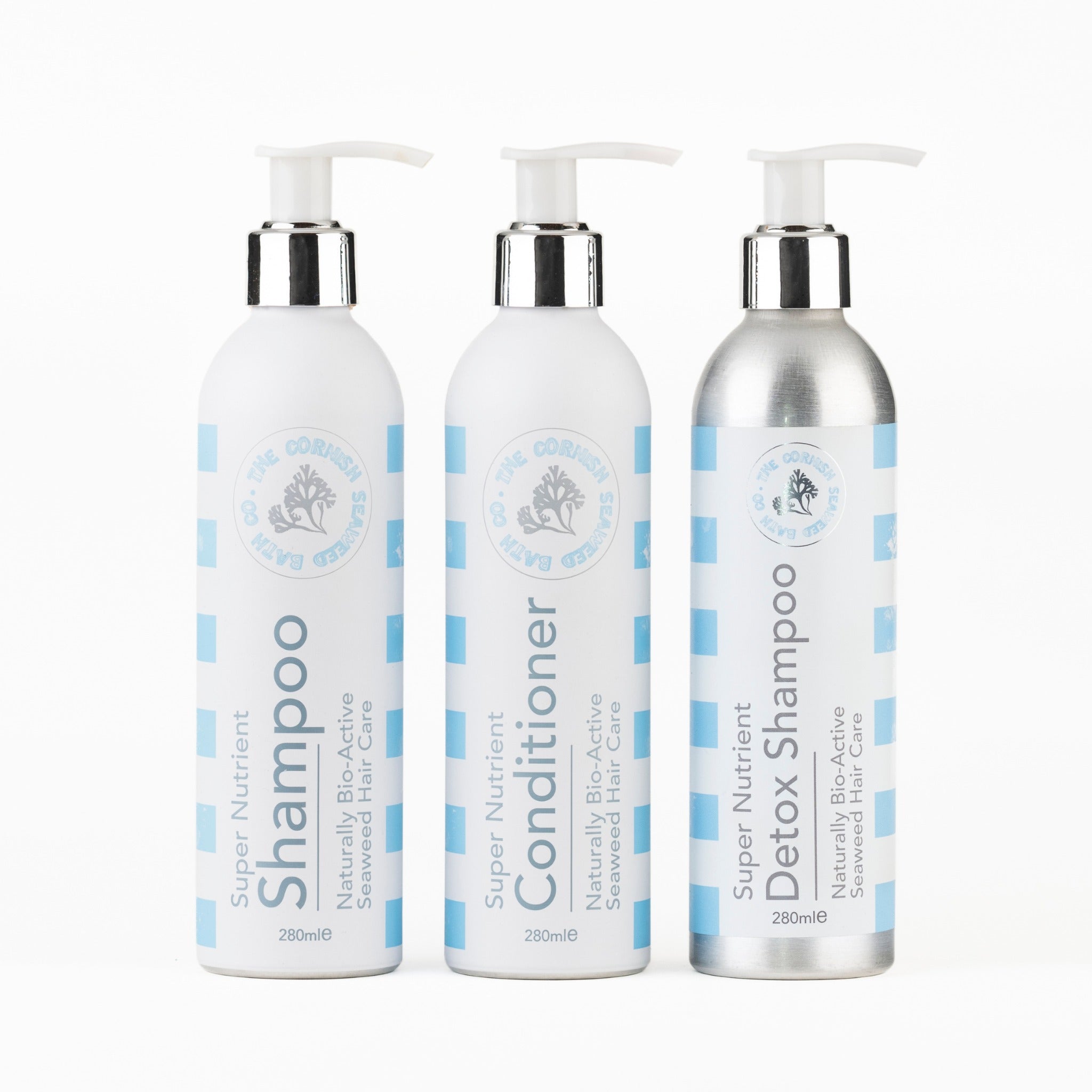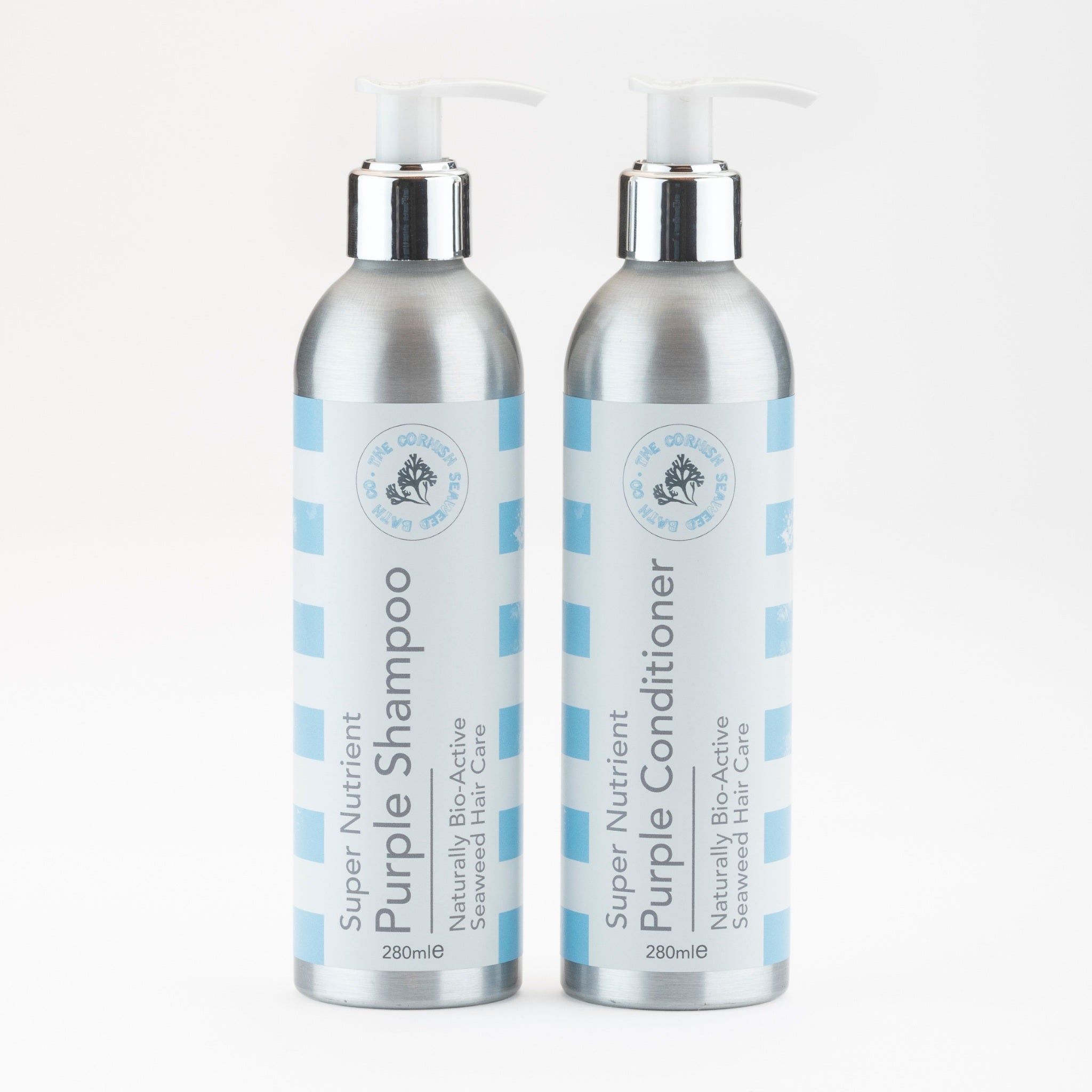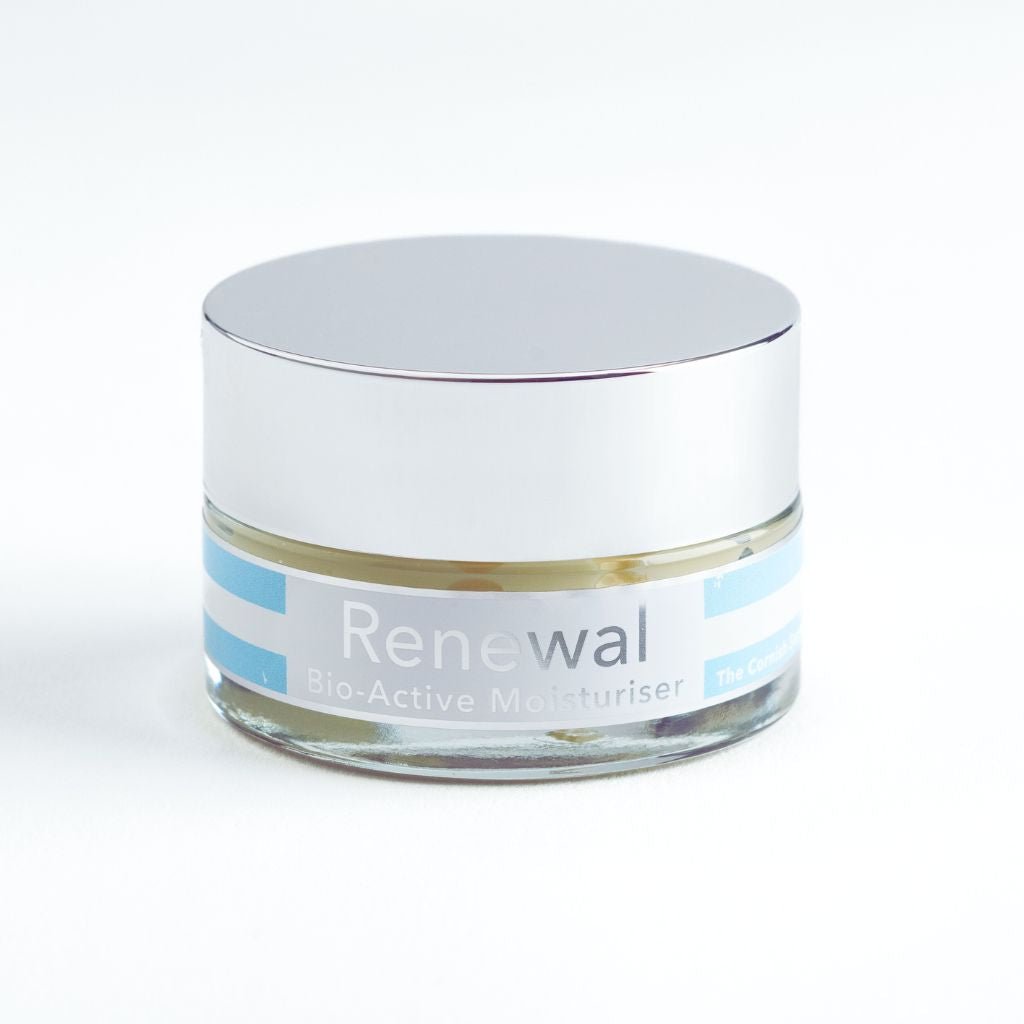Irish Seaweeds: Nature's Coastal Treasures for Wellness and Beauty
Ireland's rugged coastline harbours some of the world's most nutrient-dense seaweeds, cultivated by centuries of Atlantic tides and mineral-rich waters. These marine botanicals have sustained coastal communities for over a millennium, offering remarkable benefits that modern science continues to validate.
Understanding Irish Seaweeds: Nature's Coastal Treasures
Main Categories of Irish Seaweed
Irish seaweeds fall into three distinct groups, each with unique characteristics and applications. Brown seaweeds, including kelp and bladderwrack, dominate the lower intertidal zones with their substantial, leathery fronds. These species contain the highest concentrations of minerals and may support therapeutic applications in bath rituals and skincare preparations.
Red seaweeds like dulse and Irish moss occupy the middle shore zones, offering delicate textures and mild flavours perfect for culinary use. Green seaweeds such as sea lettuce prefer the upper tidal areas, providing fresh, mineral-rich additions to salads and soups. Each category adapts to specific tidal exposures, creating a natural zonation pattern along Ireland's coastline.
Key Edible and Functional Species
- Bladderwrack (Fucus vesiculosus): Recognisable by distinctive air bladders, rich in iodine and minerals
- Dulse (Palmaria palmata): Purple-red fronds with nutty flavour, eaten fresh or dried
- Irish Moss (Chondrus crispus): Carrageenan-rich species used for thickening and skin conditioning
- Sea Lettuce (Ulva lactuca): Bright green, paper-thin sheets with mild taste
- Kelp (Laminaria digitata): Large brown fronds packed with minerals and umami flavour
| Species | Colour | Texture | Primary Uses | Harvest Season |
|---|---|---|---|---|
| Bladderwrack | Olive-brown | Leathery with air pockets | Bath soaks, skincare | Spring-Summer |
| Dulse | Deep red-purple | Soft, chewy | Snacking, seasoning | Year-round |
| Irish Moss | Purple-red | Branched, cartilaginous | Thickening, skincare | Spring-Autumn |
| Sea Lettuce | Bright green | Thin, translucent | Salads, garnishes | Summer |
Irish Seaweeds in History and Everyday Living
Ireland's Seaweed Traditions
For over a millennium, Irish coastal communities have woven seaweed into daily life with remarkable ingenuity. Beyond the well-known potato famine relief, families regularly harvested dulse as a protein-rich snack, spread kelp on fields as fertiliser, and prepared carrageen puddings for respiratory support. These practices weren't mere survival tactics, they represented sophisticated understanding of marine nutrition that modern science continues to validate.
Traditional Irish seaweed baths, particularly around County Sligo, mirror the therapeutic traditions we've cultivated in Cornwall. Families would heat seawater and steep fresh seaweed to create mineral-rich soaks believed to ease joint discomfort and nourish skin. This wisdom persists today, with Irish spas and wellness centres offering authentic seaweed treatments that draw visitors seeking natural restoration.
Modern-Day Applications
Contemporary Ireland has embraced seaweeds with renewed enthusiasm, integrating them into artisanal food production, sustainable skincare, and environmental restoration projects. Irish seaweed farms now supply international markets with premium dulse, kelp noodles, and mineral-rich seasonings.
- Culinary Innovation: Michelin-starred restaurants feature sea lettuce salads and kelp-infused broths
- Wellness Retreats: Authentic seaweed baths using traditional heating methods
- Sustainable Agriculture: Organic farmers use kelp meal as natural soil conditioner
- Artisan Skincare: Local producers create soaps and balms using time-honoured recipes
- Marine Conservation: Seaweed cultivation helps offset coastal erosion and carbon absorption
Harvesting and Sourcing Irish Seaweed Safely and Sustainably
Traditional & Modern Harvesting Techniques
Responsible seaweed harvesting requires precise timing and technique to ensure regeneration. The optimal window occurs during spring low tides when maximum seaweed variety is accessible without damaging root systems. Traditional Irish harvesters use sharp knives to cut fronds cleanly, leaving at least one-third of each plant attached to rocky substrates.
Step-by-Step Sustainable Harvesting:
- Check local regulations and obtain necessary permits
- Harvest during low spring tides (2-3 hours before low tide)
- Use clean, sharp stainless steel knife
- Cut fronds 10cm above attachment point
- Take maximum 30% from any single area
- Rinse immediately in clean seawater
- Process within 4 hours of harvest
Modern sustainable practices incorporate scientific monitoring to prevent over-harvesting. Irish seaweed cooperatives now use GPS mapping to rotate harvest areas, ensuring three-year recovery periods for slow-growing species like bladderwrack. This approach maintains ecosystem balance while supporting local livelihoods, principles we apply to our own Cornish sourcing practices.
Ensuring Quality and Safety
Premium Irish seaweeds display vibrant natural colours without bleaching or artificial enhancement. Fresh dulse should show deep red-purple hues, while healthy bladderwrack maintains olive-brown tones with intact air bladders. Avoid specimens with unusual odours, slimy textures, or obvious contamination from nearby industrial activity.
Quality verification extends beyond visual inspection to include testing for heavy metals, bacterial contamination, and radioactivity levels. Reputable Irish suppliers provide certificates of analysis showing compliance with EU organic standards and marine safety regulations. We maintain similar rigorous testing protocols for our Cornish seaweed to ensure consistent purity and potency.
Addressing Common Foraging Complications
Legal access represents the primary challenge for seaweed foragers, as many Irish coastal areas fall under private ownership or conservation protection. Contact local authorities before harvesting, as regulations vary significantly between counties. Some areas require permits or restrict collection to specific seasons, while others prohibit commercial quantities entirely.
- Can I pick Irish seaweed anywhere? No, check with local councils and landowners first. Many beaches have restrictions or require permits for seaweed collection.
- How do I test for safe consumption? Source from certified suppliers or test wild specimens for heavy metals and bacterial contamination through marine laboratories.
Health, Nutrition, and Everyday Benefits of Irish Seaweeds
Essential Nutritional Components
Irish seaweeds deliver exceptional mineral density, particularly iodine concentrations that can reach 200-300mg per 100g in species like bladderwrack. This single serving provides over 100 times the daily iodine requirement, supporting thyroid function when consumed in appropriate quantities. The calcium content in dulse rivals dairy products, while iron levels exceed many terrestrial vegetables.
| Seaweed Type | Iodine (mg/100g) | Calcium (mg/100g) | Iron (mg/100g) | Vitamin C (mg/100g) |
|---|---|---|---|---|
| Bladderwrack | 150-300 | 1,200 | 15 | 25 |
| Dulse | 8-35 | 1,350 | 150 | 20 |
| Irish Moss | 47 | 885 | 89 | 15 |
| Sea Lettuce | 16 | 1,900 | 18 | 39 |
Potential Health and Wellness Advantages
Research suggests that regular seaweed consumption may support cardiovascular health through bioactive compounds called fucoidans, which appear in brown seaweeds like bladderwrack. These complex carbohydrates demonstrate anti-inflammatory properties in laboratory studies, though human trials remain limited. The high fibre content also may support digestive wellness by promoting beneficial gut bacteria.
Start with 1-2g dried seaweed daily to allow your system to adjust to the mineral concentration. Dulse flakes work well sprinkled on salads, while powdered kelp can enhance soups and stews. Monitor iodine intake carefully, excessive consumption may disrupt thyroid function, particularly in individuals with existing thyroid conditions.
Incorporating Seaweed Into Everyday Rituals
Simple integration begins with treating seaweed as a mineral-rich seasoning rather than a primary ingredient. Add dulse flakes to scrambled eggs, blend sea lettuce into smoothies, or create mineral-rich bath soaks using dried bladderwrack, similar to the therapeutic traditions we practice with Cornish seaweed in our bath preparations.
Irish Seaweed in Cooking: Recipes and Practical Tips
Edible Seaweeds and Their Taste Profiles
Dulse offers the most approachable introduction to seaweed cuisine, delivering a nutty, slightly smoky flavour reminiscent of bacon when pan-fried. Sea lettuce provides delicate mineral notes without overwhelming saltiness, making it perfect for fresh applications. Kelp brings deep umami richness that enhances broths and stews, while Irish moss remains virtually tasteless but adds beneficial thickening properties.
- Beginner-Friendly Options: Dulse flakes, dried sea lettuce, powdered kelp
- Advanced Applications: Fresh Irish moss for puddings, whole kelp fronds for wrapping
- Versatile All-Purpose: Bladderwrack powder for mineral supplementation
Popular Ways to Prepare and Enjoy
Fresh dulse requires minimal preparation, simply rinse in cold water and enjoy raw as a snack, or pan-fry for 30 seconds until crispy. For dried varieties, rehydrate in cold water for 10-15 minutes before adding to dishes. Sea lettuce works beautifully in salads when torn into bite-sized pieces and dressed with lemon and olive oil.
Classic Irish Dulse Preparation:
Rinse 15g fresh dulse in cold seawater, pat dry, then pan-fry in a hot skillet for 20-30 seconds until edges crisp. Season lightly with black pepper and serve immediately as a side dish or snack.
Addressing Common Culinary Challenges
Over-salting represents the most frequent mistake when cooking with Irish seaweeds. Reduce added salt by half when incorporating seaweed, then adjust seasoning after tasting. If dishes become too briny, balance with acidic ingredients like lemon juice or vinegar, which also enhance mineral absorption.
Texture Troubleshooting: Tough, rubbery seaweed usually indicates over-cooking. Most varieties need only brief heating, add to dishes during final minutes of cooking to preserve texture and nutrients.
Irish Seaweed in Skincare and Bath Rituals
Traditional Bath and Beauty Uses
Irish coastal communities have long recognised seaweed's skin-nourishing properties, creating therapeutic baths by steeping fresh bladderwrack and dulse in heated seawater. These mineral-rich soaks were believed to ease skin irritation and provide essential nutrients through topical absorption, practices that align closely with our Cornish seaweed bath traditions.
Traditional preparation involved heating large pots of seawater to near-boiling, then adding 200-300g fresh seaweed per bath. The mixture would steep for 20 minutes before straining, creating an amber-coloured, mineral-dense bath solution. Modern adaptations use dried seaweed with regular bath water, maintaining the therapeutic benefits while improving convenience.
Current Skincare and Bath Products
Contemporary Irish seaweed skincare focuses on gentle, mineral-rich formulations suitable for sensitive skin types. Products typically feature whole seaweed extracts combined with traditional carrier oils like olive or sunflower oil. Bath soaks remain the most popular application, offering full-body mineral exposure in 15-20 minute sessions.
- At-Home Bath Ritual: Add 50g dried Irish seaweed to muslin bag, steep in hot bath for 5 minutes before soaking
- Optimal Temperature: 37-40°C to open pores without causing irritation
- Duration: 15-20 minutes maximum to prevent over-exposure to minerals
- Post-Bath Care: Rinse briefly with fresh water, pat skin dry gently
Irish vs Cornish Seaweed Comparison
| Aspect | Irish Seaweed Traditions | Cornish Seaweed Practices |
|---|---|---|
| Primary Species | Bladderwrack, Dulse, Irish Moss | Fucus Serratus, Ulva Lactuca |
| Traditional Preparation | Heated seawater steeping | Cold-pressed extraction methods |
| Product Focus | Bath soaks, simple balms | Sophisticated facial oils, cornish seaweed baths,cleansers |
| Carrier Oil Preference | Olive oil, sunflower oil | Jojoba oil, tamanu oil |
| Sustainability Approach | Community-based harvesting | Hand-harvested, minimal processing |
Choosing Irish Seaweed Products: What to Look For
Forms and Formats Available
Irish seaweed products range from whole dried fronds to concentrated powders and liquid extracts. Whole leaf varieties retain maximum mineral content and provide the most authentic experience, while powdered forms offer convenience for culinary applications. Bath products typically feature coarsely chopped seaweed that releases minerals gradually during steeping.
For the richest therapeutic experience, seek products using minimally processed whole seaweed rather than heavily refined extracts. Dried whole dulse maintains its characteristic purple colour and pliable texture, while quality bladderwrack retains visible air bladders and olive-brown hues. These visual indicators suggest proper harvesting and drying techniques that preserve beneficial compounds.
Reading Labels and Verifying Sourcing
Authentic Irish seaweeds should list specific species names (Palmaria palmata for dulse, Fucus vesiculosus for bladderwrack) rather than generic "seaweed extract." Look for organic certification from recognised bodies like the Irish Organic Association, which ensures sustainable harvesting and processing standards. Wild-harvested labels should specify exact coastal regions and harvesting methods.
Transparent suppliers provide detailed information about testing protocols, including heavy metal analysis and bacterial contamination screening. Avoid products with artificial colours, preservatives, or synthetic fragrances that mask natural seaweed characteristics. Quality Irish seaweed products maintain their natural appearance and subtle marine aroma.
Decision Guide for Different Needs
- For Culinary Use: Choose whole dried varieties with clear species identification
- For Bath Rituals: Select coarsely chopped seaweed suitable for steeping
- For Skincare: Look for products combining seaweed with quality carrier oils
- For Gifting: Seek attractive packaging with educational information about Irish traditions
- For Beginners: Start with mild varieties like dulse or sea lettuce
Comparison: Irish versus Cornish Seaweed Traditions and Practices
Both Irish and Cornish seaweed traditions share deep historical roots in coastal survival and wellness, yet each has evolved distinct characteristics shaped by local environments and cultural practices. Irish seaweed culture emphasises community-based harvesting and traditional food applications, while Cornish practices have developed sophisticated skincare applications using precise extraction methods.
From our Cornish perspective, we admire the Irish approach to seaweed as everyday nourishment, their integration of dulse into daily meals and communal harvesting practices reflects a sustainable relationship with marine resources. However, our focus on premium skincare applications allows us to explore seaweed's therapeutic potential through carefully crafted formulations that maximise mineral bioavailability and skin compatibility.
| Tradition Aspect | Irish Approach | Cornish Approach |
|---|---|---|
| Harvesting Philosophy | Community-based, seasonal gathering | Hand-selected, quality-focused collection |
| Species Emphasis | Dulse, bladderwrack, Irish moss | Fucus serratus, Ulva lactuca |
| Primary Applications | Food, traditional baths, agriculture | Premium skincare, therapeutic bath rituals |
| Processing Methods | Simple drying, minimal processing | Cold-pressed oils, sophisticated extraction |
| Sustainability Focus | Community stewardship, rotation systems | Individual responsibility, regenerative harvesting |
The Cornish Seaweed Advantage: Premium Marine Skincare
While we celebrate the rich heritage of Irish seaweed traditions, our Cornish approach offers distinct advantages for those seeking sophisticated marine skincare. Our wild Cornish seaweed, particularly Fucus serratus, provides exceptional mineral density and amino acid content that may support skin barrier function and hydration.
Why Our Seaweed Skincare Excels
Our formulations go beyond simple seaweed preparations. Take our Renewal Bio-Active Moisturiser, we combine Fucus serratus with angelica sinensis and frankincense resin, creating a lightweight yet nourishing formula that naturally supports the skin's own collagen production. Apply a small amount to clean, dry skin on face and neck for daily hydration and protection.
For targeted facial care, our Sea Organic Facial Oil offers a simplified, 100% natural formula perfect for scar care and blemish-prone skin. Apply 2-3 drops to damp skin on face and neck after cleansing, this deeply hydrating blend supports skin without clogging pores and works beautifully under makeup or as overnight replenishment.
Complete Seaweed Skincare Routine
Daily Ritual:
- Cleanse: Renewal Facial Cleanser (1-2 pumps on damp skin, massage gently, rinse), gentle, non-stripping cleanse that's sulphate-free and palm-free
- Treat: Choose from our four facial oils based on your skin's needs
- Moisturise: Renewal Bio-Active Moisturiser for lightweight daily hydration
- Eyes: Revitalise Eye Gel (pea-sized amount with ring finger) for cooling de-puffing
Weekly Enhancement:
- Wild Seaweed Bath: Soak 15-30 minutes in our mineral-rich bath for full-body nourishment
- Body Care: Super Nutrient Body Oil on damp skin after bathing, followed by Skin Repair Balm for targeted dry areas
Best Experiences and Gift Ideas: Exploring Irish and Cornish Seaweed Rituals
Combining Irish seaweed traditions with Cornish therapeutic practices creates uniquely restorative experiences that honour both coastal cultures. Consider pairing traditional Irish dulse snacks with our Cornish seaweed bath rituals, the internal mineral nourishment complements external skin benefits beautifully.
For meaningful gifts, select products that tell the story of coastal heritage while delivering genuine therapeutic benefits. Our Wild Cornish Seaweed Bath paired with premium facial oils creates an educational and experiential gift that introduces recipients to authentic seaweed traditions whilst providing sophisticated skincare benefits.
- Beginner's Introduction: Gentle seaweed bath soaks with educational materials about coastal traditions
- Culinary Exploration: Whole dried Irish seaweed varieties with preparation guides
- Skincare Discovery: Our mineral-rich facial oils and cleansers featuring sustainably harvested Cornish seaweed
- Therapeutic Ritual: Complete bath experiences combining Irish soaking traditions with Cornish refinement
- Educational Journey: Products that share the science and heritage behind seaweed wellness
Embracing Coastal Wisdom Through Seaweed
Whether drawn to Irish culinary traditions or Cornish skincare innovations, Irish seaweeds offer pathways to deeper connection with coastal wisdom and marine wellness. These remarkable organisms represent thousands of years of sustainable coastal living, providing nourishment, healing, and environmental stewardship lessons that remain relevant today.
As we explore the rich heritage of Irish seaweeds, it becomes clear that these marine treasures offer remarkable parallels to our own Cornish seaweed traditions. Both coastal regions have cultivated deep respect for sustainable harvesting and the transformative power of seaweed in daily wellness rituals.
The enduring appeal of Irish seaweeds, whether harvested from Ireland's Atlantic shores or Cornwall's mineral-rich waters, lies in their ability to connect us with nature's most fundamental rhythms. These coastal treasures remind us that the most effective wellness solutions often emerge from the wisdom of traditional practices, refined through modern understanding and sustainable innovation.
Frequently Asked Questions
What are the main types of Irish seaweeds and how are they traditionally used?
Irish seaweeds are primarily categorised into brown, red, and green types. Brown seaweeds like bladderwrack and kelp are often used in bath soaks and skincare for their mineral richness. Red seaweeds such as dulse and Irish moss are traditionally consumed as snacks or used for thickening and skin conditioning, while green seaweeds like sea lettuce are enjoyed fresh in salads and garnishes.
How have Irish coastal communities historically incorporated seaweed into their daily lives and wellness practices?
Irish coastal communities have long integrated seaweed into everyday life by harvesting dulse as a nutritious snack, using kelp as fertiliser for crops, and preparing carrageen puddings for supportive wellness rituals. These practices reflect a practical relationship with the seaweed resource, blending nourishment and traditional remedies without reliance on modern medicine.
What are the nutritional and therapeutic benefits of popular Irish seaweed species like bladderwrack, dulse, and Irish moss?
Bladderwrack is valued for its mineral content, particularly iodine, which supports general wellbeing and features in skincare preparations. Dulse offers a chewy texture and is rich in nutrients, making it a wholesome snack or seasoning. Irish moss contains carrageenan, which helps with skin conditioning and is traditionally used as a natural thickener in foods.
How are Irish seaweeds being utilised in modern culinary, skincare, and environmental applications?
Today, Irish seaweeds continue to enrich culinary dishes with their distinctive flavours and textures, especially in salads and seasonings. Skincare products incorporate seaweed extracts for their nourishing and soothing properties, often combined with complementary botanicals. Environmentally, seaweeds contribute to sustainable practices by supporting coastal ecosystems and offering natural alternatives in various formulations.
A picture tells a thousand words: out of necessity, some images in this blog post have been created using artificial intelligence models. This is to help us bring to life & more comprehensively express the written content within this post. We only using artificially generated images when we don’t have a suitable image available to us.
 Early Black Friday!
Early Black Friday!


